Even though Wilfred Thesiger did his great camel journeys between the years of 1945-50, experiences from which he based his classic book, Arabian Sands, I am thrilled to see how little has changed since those years. Especially when it comes to the characteristics of the Bedu (Badu) of this region. Everything from their chatter around the campfire and love of money to how he, Thesiger, feels it was easy for the frugal Bedu to integrate themselves with Islam. Once again I am re-reading Arabian Sands and for every time I read it, the more I realize that this is possibly one of the best books ever written. And, believe me, I take my research serious and right now, I am trying to figure out if I through the Bedus of the Sands of Al Mahra better can explain Islam for all those worried people in my part of the world, who obviously just see it is a conservative and backward religion. And since I live with an academic with the Middle East as a specialty and traveled with Tanya, a hardcore, sensitive and honest journalist with a very good knowledge of Islam and this part of the world, I have felt really uncomfortable with how to use my Expedition and journey to explain Islam better and more positive. This was one of the main reasons of doing this trip, I know it seems an almost impossible quest, but after reading Arabian Sands again, I feel confident of doing just this!
Both Tanya and my wife stick to the academic rule of not attempting to explain anything you can´t back up with 100% proof. Which basically means it is impossible for me or anyone to say that the Bedus of this region called Al Mahra was the first humans to arrive and settle on the Arabian Peninsula. This would make them the first Arabs. And that their frugal, harsh, demanding and strict discipline to survive are traditions that Islam is based on. And, even complicating the issue more, after I have consulted academic heavy weights as Paul Dresh and Khaled Fattah, who was the one which inspired me to go to Al Mahra, the answers I got, didn´t make it easier for me. I also remember I talked to Abdul Karim Al-Iryani, probably Yemen’s most experienced politician and former leader, really a walking library, when I got back from Al Mahra, and he basically said that it is generally perceived today, that the bedus were the first inhabitants on the peninsula. He even quoted 8-12 000 years ago. That gave me some hope. But not until I once again, consulted Arabian Sands, did I feel comfortable!
Let me quote Thesiger on the subject of Islam from his book, published 1956:
“It is a religion which claims to regulate not only a Muslim´s religious beliefs and the ritual of his religious observance, but also the structure of his society and every aspect of his daily life, even how he should wash after sexual intercourse. The customs and conventions which Islam imposed upon its adherents were those of Arabia.”
Just my feeling after spending some time with them, not only this time, but back in 2009 on the Omani side of Al Mahra. And let me just add, I am also applying 26 years of exploring on this opinion. But it isn´t only this subject which makes me like the book, but also all descriptions of the Bedus which still rings very true today.
To note a few:
The saddle was my biggest worry before setting of crossing the Sands of Al Mahra. After visiting the Omani side back in 2009, my only memory was incredibly uncomfortable to ride. Just a crescent shaped fiber pad behind the hump, pull up the legs and use them as suspenders. See this clip below. And, of course, when we had bought our camel Kensington and it was time to leave for the crossing, the saddle and saddle bags which I had bought with the camel, turns out being two dirty blankets and a rope I luckily brought with me. Same as during Thesiger´s days. I was initially furious, since I knew there existed better pack saddles for camels. At least that was what I had been told. But it turns out this was really the best solution. And that was the reason they were so careful not to overload Kensington with more than around 60 kg:s (100 in Thesiger´s days). It was all a question of measuring the weight equal and balancing it right. After initial failure, it worked very well. Kensington didn´t pick up any sores on his back and hump. Only a small cut on his front hoof due to one of the youngest guides ignorance, Mohammed Al Kathiri.
As Thesiger clearly states, not once did he see any of the Bedu´s mistreat their camels. They genuinely love them. This stands very true still today. They´re definitely among the best four legged handlers of animals I have ever come across. It was always hugging, kissing and patience.
Initially he had difficulties with not getting any private time, having to share everything, handling their continuous love for money, which meant talking about money with everyone they met, all the time, looking at it, calculating. This still stands true. But as he, once we got used to it and understood it, it wasn´t a problem.
The Bedus saw beauty in their camels. But never when it came to their surroundings, the spectacular desert. For them, paradise is lush green fields with lots of food for their camels. Thesiger noticed this all the time, so did we. I remember especially one of the first days, we were passing through Wadi Kudyut, at times stunning desert scenery, it was really hot, we put up camp at 8 in the morning and passed the day just surviving. Our partner Mabkhout continuously asked us, why we who come from a lush beautiful country, wants to experience this hell of a desert.
Thesiger writes; “After dinner we sat around and talked, the favorite occupation of the Bedu. They´re unflagging talkers.”
So true still today! No matter how tired all of our great companions were, they still talked and talked, told all listeners our story, our peculiarities and calmed anyone´s fears of what we were doing there. Filming made most of them uncomfortable. i think this was the biggest difference between our two cultures, they just love talking, whereas we just wanted silence and peace at the end of a hard day and the last think we wanted, was to talk. They´re really social experts!
Thesiger often mentions that the Bedu traveled long distances just to have a look at the Christians (nasrani in Arabic). We did cause a lot of commotion and attracted attention. Especially our maps and our GPS. Back in the 1940´s Thesiger fears that maps and new technical gadgets will spread quickly over the Land of the Bedu and of course they have, since most settlements have TV, laundry machines and so on, but when it comes to maps, they still fascinate and drew big crowds. As did the GPS.
Coming back to the origin of Arabs, Thesiger writes (His book was published 1956);
“The Bedus themselves divide their race into the Arab al Arabia, or pure Arabs, who they say are descended from Qahtan or Joktan and originated in the Yemen, and the Arab al Mustaraba, or adopted Arabs, descended from Adnan, the offspring from Ismael, who originated in the north. It seemed to me significant that it was the desert Arabs who had imposed their characteristics on the Arab race not the more numerous inhabitants of the Yemen, with their traditions of an ancient civilization. It was the customs and standards of the desert which had been accepted by townsmen and villagers alike, and which were spread by the Arab conquest across North Africa and the Middle East, and by Islam across a great part of the world.”
It seems to me significant as well. And it will make it easier for me to explain.
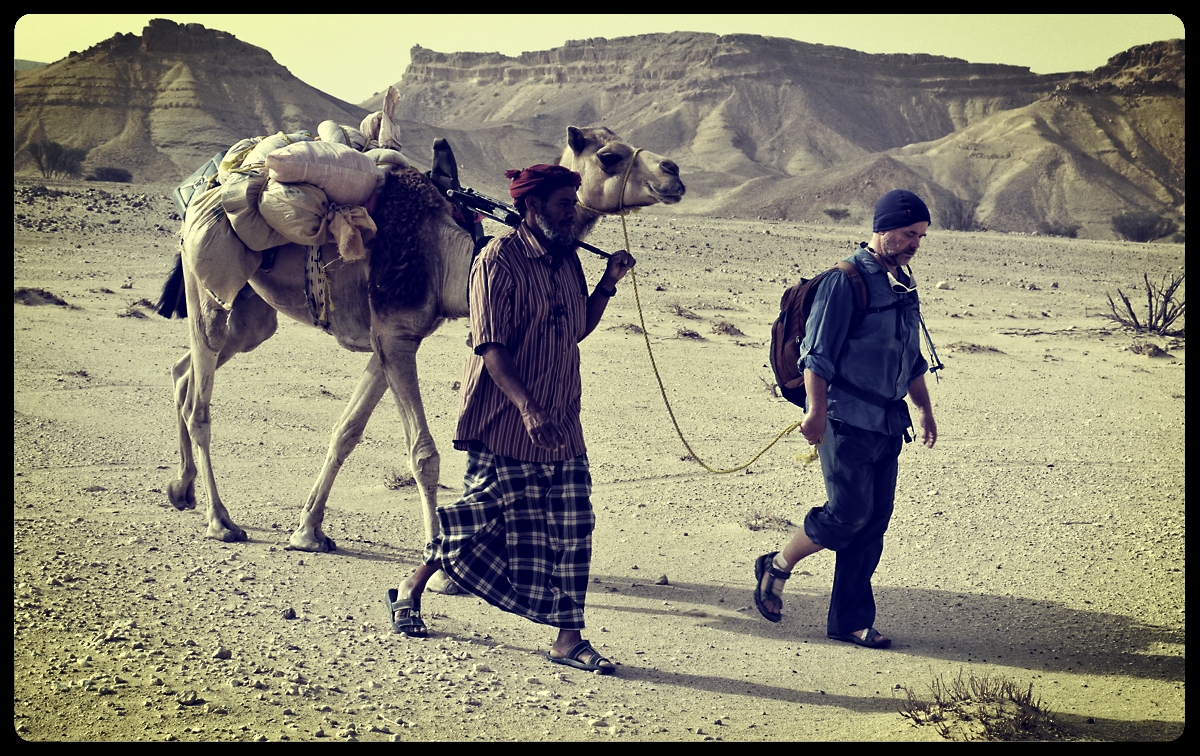
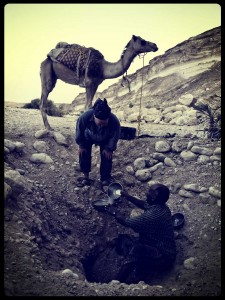
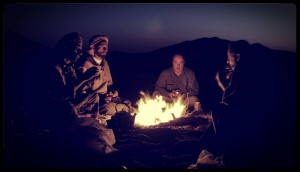
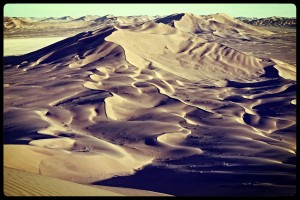


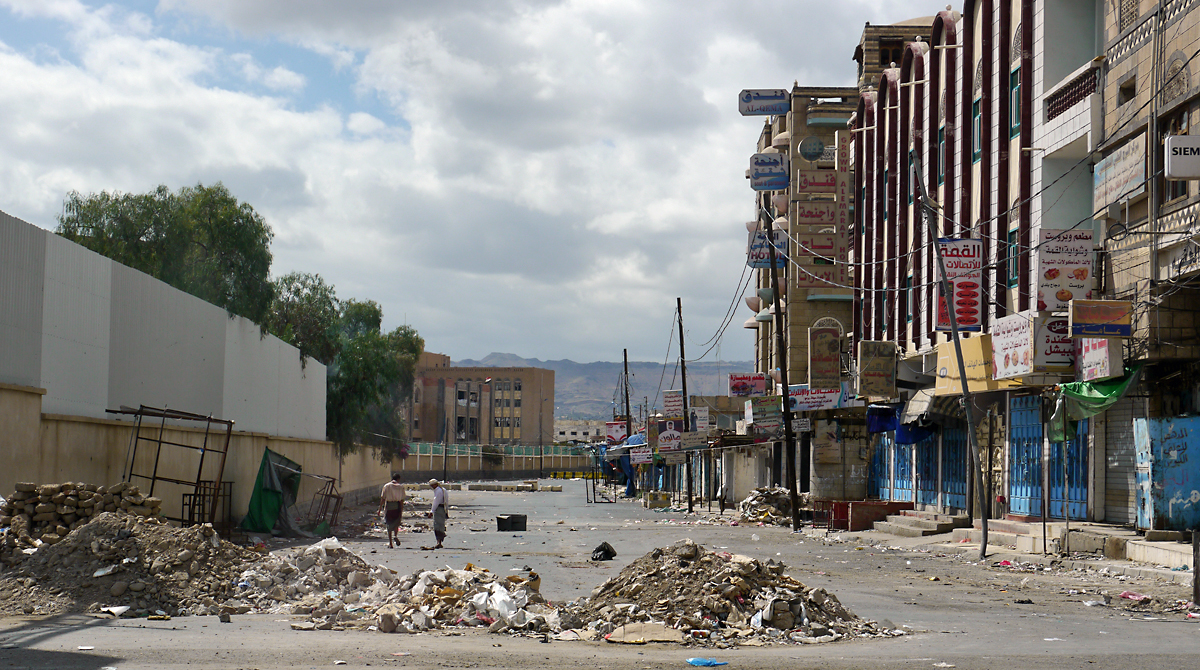
Hi Michael, Wonderful tribute to a classic and beautiful work by Wilfred Thesiger
Thanks Bruce, it is really a gem after somehow passed some of his tracks on my route.
Great post!